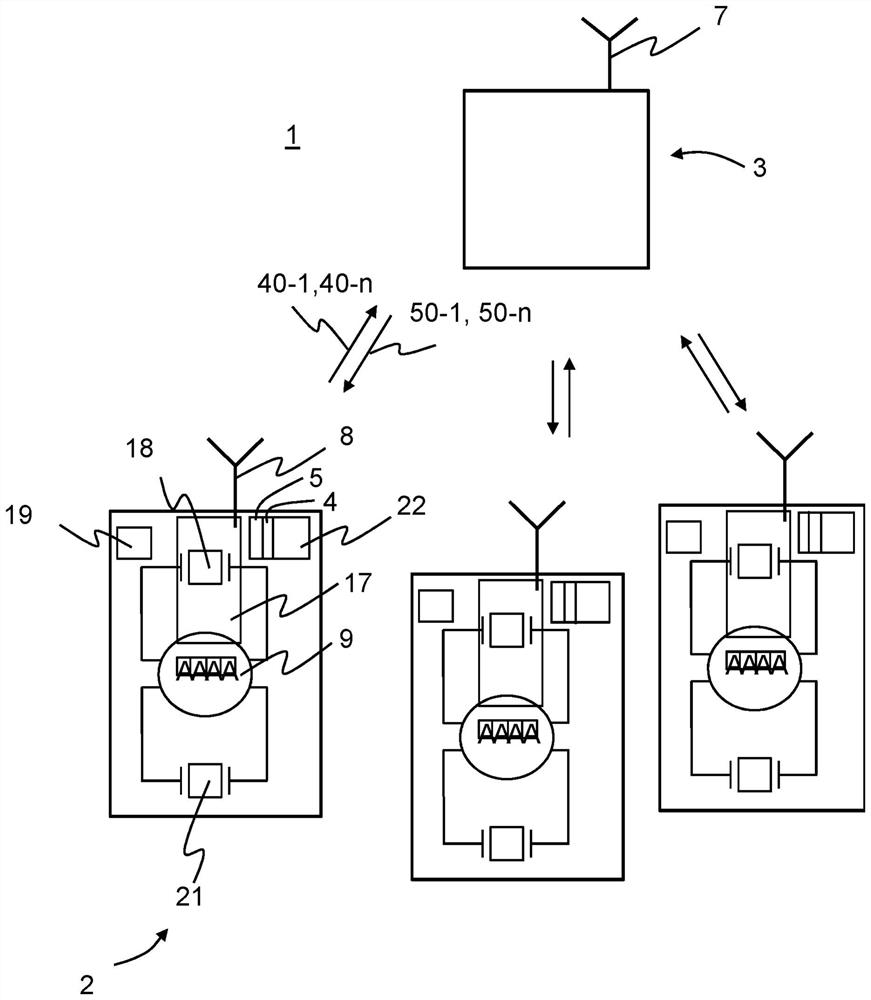Method for bidirectionally transmitting data, in particular sensor data, and node with radio function
A two-way radio, radio technology, used in wireless communication, instruments, electrical components, etc., can solve problems such as consumption, and achieve the effect of saving power, small errors, and saving computing power
- Summary
- Abstract
- Description
- Claims
- Application Information
AI Technical Summary
Problems solved by technology
Method used
Image
Examples
Embodiment Construction
[0035] figure 1 The designation 1 in the designates a two-way radio communication system or radio communication network, which comprises a base station 3 , for example a so-called data collector, and a plurality of independent, autonomously operating nodes 2 . A node 2 is for example any type of sensor device or meter, such as a water, heat, gas or electricity meter, or an actuator. These nodes 2 have in common that they have a communication module 17 with an antenna 8 and a control and computing unit 19 . Furthermore, each node 2 has a first frequency generator 18 for generating a carrier frequency for radio transmission and a second frequency generator 21 for determining the frequency in the uplink The point in time at which the data packets 40-1, 40-n are transmitted and used to determine the reception window for receiving the data packets 50-1, 50-n in the downlink. The first frequency generator 18 is an HF (high frequency) quartz, which typically has an error of the ord...
PUM
 Login to View More
Login to View More Abstract
Description
Claims
Application Information
 Login to View More
Login to View More - R&D
- Intellectual Property
- Life Sciences
- Materials
- Tech Scout
- Unparalleled Data Quality
- Higher Quality Content
- 60% Fewer Hallucinations
Browse by: Latest US Patents, China's latest patents, Technical Efficacy Thesaurus, Application Domain, Technology Topic, Popular Technical Reports.
© 2025 PatSnap. All rights reserved.Legal|Privacy policy|Modern Slavery Act Transparency Statement|Sitemap|About US| Contact US: help@patsnap.com



